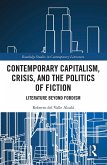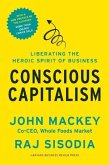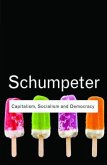- Broschiertes Buch
- Merkliste
- Auf die Merkliste
- Bewerten Bewerten
- Teilen
- Produkt teilen
- Produkterinnerung
- Produkterinnerung
Heller and McElhinny reinterpret sociolinguistics for the twenty-first century with an original approach to the study of language that is situated in the political and economic contexts of colonialism and capitalism.
Andere Kunden interessierten sich auch für
![The American Heritage Dictionary of the English Language, Fifth Edition: Fiftieth Anniversary Printing The American Heritage Dictionary of the English Language, Fifth Edition: Fiftieth Anniversary Printing]() Editors of the American Heritage DictionariesThe American Heritage Dictionary of the English Language, Fifth Edition: Fiftieth Anniversary Printing51,99 €
Editors of the American Heritage DictionariesThe American Heritage Dictionary of the English Language, Fifth Edition: Fiftieth Anniversary Printing51,99 €![This Language, A River This Language, A River]() K. Aaron SmithThis Language, A River34,99 €
K. Aaron SmithThis Language, A River34,99 €![This Language, A River This Language, A River]() K. Aaron SmithThis Language, A River77,99 €
K. Aaron SmithThis Language, A River77,99 €![Contemporary Capitalism, Crisis, and the Politics of Fiction Contemporary Capitalism, Crisis, and the Politics of Fiction]() Roberto del Valle AlcalaContemporary Capitalism, Crisis, and the Politics of Fiction63,99 €
Roberto del Valle AlcalaContemporary Capitalism, Crisis, and the Politics of Fiction63,99 €![Capitalism, Class Conflict and the New Middle Class Capitalism, Class Conflict and the New Middle Class]() Bob CarterCapitalism, Class Conflict and the New Middle Class68,99 €
Bob CarterCapitalism, Class Conflict and the New Middle Class68,99 €![Conscious Capitalism, With a New Preface by the Authors Conscious Capitalism, With a New Preface by the Authors]() John MackeyConscious Capitalism, With a New Preface by the Authors25,99 €
John MackeyConscious Capitalism, With a New Preface by the Authors25,99 €![Capitalism, Socialism and Democracy Capitalism, Socialism and Democracy]() Joseph A. SchumpeterCapitalism, Socialism and Democracy39,99 €
Joseph A. SchumpeterCapitalism, Socialism and Democracy39,99 €-
-
-
Heller and McElhinny reinterpret sociolinguistics for the twenty-first century with an original approach to the study of language that is situated in the political and economic contexts of colonialism and capitalism.
Hinweis: Dieser Artikel kann nur an eine deutsche Lieferadresse ausgeliefert werden.
Hinweis: Dieser Artikel kann nur an eine deutsche Lieferadresse ausgeliefert werden.
Produktdetails
- Produktdetails
- Verlag: University of Toronto Press
- Seitenzahl: 336
- Erscheinungstermin: 25. Oktober 2017
- Englisch
- Abmessung: 228mm x 151mm x 22mm
- Gewicht: 502g
- ISBN-13: 9781442606203
- ISBN-10: 1442606207
- Artikelnr.: 47743604
- Herstellerkennzeichnung
- Libri GmbH
- Europaallee 1
- 36244 Bad Hersfeld
- gpsr@libri.de
- Verlag: University of Toronto Press
- Seitenzahl: 336
- Erscheinungstermin: 25. Oktober 2017
- Englisch
- Abmessung: 228mm x 151mm x 22mm
- Gewicht: 502g
- ISBN-13: 9781442606203
- ISBN-10: 1442606207
- Artikelnr.: 47743604
- Herstellerkennzeichnung
- Libri GmbH
- Europaallee 1
- 36244 Bad Hersfeld
- gpsr@libri.de
By Monica Heller and Bonnie McElhinny
List of Figures
Acknowledgements
Preface: Hope
Chapter 1: Language, Capitalism, Colonialism: Walking Backward into the
Future
1.1 Language and Inequality: A Wary Approach to a Red Thread World
1.2 Red Flags: Keywords, Hegemonies, Ideologies, and Warty Genealogies
1.3 Language Out of Place
1.4 Knotted Histories: Following the Threads through the Book
1.5 The End of the Beginning
PART I: LANGUAGE, INTIMACY, AND EMPIRE
Chapter 2: Language and Imperialism I: Conversion and Kinship
2.1 "The First Nations Bible Translation Capacity-Building Initiative"
2.2 Colonialism, Imperialism, Postcolonialism, Decolonization
2.3 Intimacy and Connection Across Five Continents
2.4 Reduced to and by Christian Love: Missionary Linguistics
2.5 Family Trees, Comparative Philology and Secular Religion
Chapter 3: Language and Imperialism II: Evolution, Hybridity, History
3.1 "Mixing Things Up"
3.2 Imperialism and Industrial Capitalism
3.3 Evolutionary Theory: Language and/as Race
3.4 Slavery, Plantation, Labour, Trade, and "Mixed" Languages
3.5 Americanist Anthropology: The Limits of Cultural Critiques of
Evolutionary Racism
American Modern: Assimilating Blackness, Disappearing Indigeneity
American Primitive: Extracting Language
3.6 Linguistic Relativity, Colonial Ambivalence, and Modern Alienation
PART II: THE CONTRADICTIONS OF LANGUAGE IN INDUSTRIAL CAPITALISM
Chapter 4: Language and European Notions of Nation and State:
4.1 "Le Symbole"
4.2 The Emergence of the Nation-State in Europe
4.3 Markets and Liberal Democracy
4.4 Making Subjects Through Language
Regimentation: Census, Standardization, Literacy
Standardization: Grammars, Dictionaries, Canons, Pedagogies
4.5 Language and Differential Citizenship
4.6 Creating Peripheries
4.7 Regulating Relations in Industrial Capitalism
4.8 Making Scientific Linguistic Expertise
Chapter 5: Internationalism, Communism, and Fascism: Alternative
Modernities
5.1 "Visions of the Future"
5.2 Peace, Geopolitics, and International Auxiliary Languages
5.3 Making Communist Linguistics
Marrism
The Bakhtin Circle
From Language as Action to Language as Tool in the Cold War
5.4. Language and Fascism
National Socialism in Germany
Language and Race: Yiddish and Esperanto
Race, Propaganda, and Mass Media
5.5 Fault Lines
PART III: BRAVE NEW WORLDS: LANGUAGE AS TECHNOLOGY, LANGUAGE AS TECHNIQUE
Chapter 6: The Cold War: Surveillance, Structuralism, and Security
6.1 "Black Out"
6.2 Battles for Hearts and Minds
6.3 The Investigation of Linguists During the McCarthy Period
6.4 Suspicious Words, Suspicious Minds
The Prague Linguistics Circle
Fear of the Translator
6.5 Infrastructure and Institutionalization: Communication Studies, Area
Studies, Linguistics, Applied Linguistics
6.6 Machine Translation and the Rise of Syntax
Rational and Universal Principles for Linguistic Analysis: Late
Structuralist Linguistics
Freedom, Creativity, and Human Nature: The Rise of Generative Linguistics
6.7 Nineteen Eighty-Four as a Weapon of the Cold War
Chapter 7: On the Origins of 'Sociolinguistics': Democracy, Development
and Emancipation
7.1 "A Dialectologist in India"
7.2 Engineering Language: Literacy, Standardization, and Education
7.3 Language Policy and Planning: Technocratic Solutions
7.4 Domestic Development and American Sociolinguistics
Challenging "Deficit": Three Approaches
Fear of the Political
7.5 Challenging Consensus
Feminist Linguistics
Difference and Domination: Anti-Racist Critiques
7.6 Pidgins, Creoles, and New Nationalisms
7.7 The Rise of Sociolinguistics in Europe: Class and Conflict
7.8 The End of the Trente Glorieuses
Chapter 8: Language in Late Capitalism: Intensifications, Unruly Desires,
and Alternative Worlds
8.1 "Nayaano-nibii maang Gichigamiin"
8.2 Late Capitalism: The Expanding Reach of the Market and the Neoliberal
State
8.3 Language, Inequality, and Ideology
8.4 Managing Your Assets: Language Quality, Linguistic Diversity, and
Citizenship
8.5 Brave New Selves: "I am a Business, Man!"
8.6 Affect, Authenticity, and Embodiment
8.7 Recapturing the Commons
8.8 Reclamation, Redress, Refusal, and Reimagining
8.9 This is How We Hope
References
Index
Acknowledgements
Preface: Hope
Chapter 1: Language, Capitalism, Colonialism: Walking Backward into the
Future
1.1 Language and Inequality: A Wary Approach to a Red Thread World
1.2 Red Flags: Keywords, Hegemonies, Ideologies, and Warty Genealogies
1.3 Language Out of Place
1.4 Knotted Histories: Following the Threads through the Book
1.5 The End of the Beginning
PART I: LANGUAGE, INTIMACY, AND EMPIRE
Chapter 2: Language and Imperialism I: Conversion and Kinship
2.1 "The First Nations Bible Translation Capacity-Building Initiative"
2.2 Colonialism, Imperialism, Postcolonialism, Decolonization
2.3 Intimacy and Connection Across Five Continents
2.4 Reduced to and by Christian Love: Missionary Linguistics
2.5 Family Trees, Comparative Philology and Secular Religion
Chapter 3: Language and Imperialism II: Evolution, Hybridity, History
3.1 "Mixing Things Up"
3.2 Imperialism and Industrial Capitalism
3.3 Evolutionary Theory: Language and/as Race
3.4 Slavery, Plantation, Labour, Trade, and "Mixed" Languages
3.5 Americanist Anthropology: The Limits of Cultural Critiques of
Evolutionary Racism
American Modern: Assimilating Blackness, Disappearing Indigeneity
American Primitive: Extracting Language
3.6 Linguistic Relativity, Colonial Ambivalence, and Modern Alienation
PART II: THE CONTRADICTIONS OF LANGUAGE IN INDUSTRIAL CAPITALISM
Chapter 4: Language and European Notions of Nation and State:
4.1 "Le Symbole"
4.2 The Emergence of the Nation-State in Europe
4.3 Markets and Liberal Democracy
4.4 Making Subjects Through Language
Regimentation: Census, Standardization, Literacy
Standardization: Grammars, Dictionaries, Canons, Pedagogies
4.5 Language and Differential Citizenship
4.6 Creating Peripheries
4.7 Regulating Relations in Industrial Capitalism
4.8 Making Scientific Linguistic Expertise
Chapter 5: Internationalism, Communism, and Fascism: Alternative
Modernities
5.1 "Visions of the Future"
5.2 Peace, Geopolitics, and International Auxiliary Languages
5.3 Making Communist Linguistics
Marrism
The Bakhtin Circle
From Language as Action to Language as Tool in the Cold War
5.4. Language and Fascism
National Socialism in Germany
Language and Race: Yiddish and Esperanto
Race, Propaganda, and Mass Media
5.5 Fault Lines
PART III: BRAVE NEW WORLDS: LANGUAGE AS TECHNOLOGY, LANGUAGE AS TECHNIQUE
Chapter 6: The Cold War: Surveillance, Structuralism, and Security
6.1 "Black Out"
6.2 Battles for Hearts and Minds
6.3 The Investigation of Linguists During the McCarthy Period
6.4 Suspicious Words, Suspicious Minds
The Prague Linguistics Circle
Fear of the Translator
6.5 Infrastructure and Institutionalization: Communication Studies, Area
Studies, Linguistics, Applied Linguistics
6.6 Machine Translation and the Rise of Syntax
Rational and Universal Principles for Linguistic Analysis: Late
Structuralist Linguistics
Freedom, Creativity, and Human Nature: The Rise of Generative Linguistics
6.7 Nineteen Eighty-Four as a Weapon of the Cold War
Chapter 7: On the Origins of 'Sociolinguistics': Democracy, Development
and Emancipation
7.1 "A Dialectologist in India"
7.2 Engineering Language: Literacy, Standardization, and Education
7.3 Language Policy and Planning: Technocratic Solutions
7.4 Domestic Development and American Sociolinguistics
Challenging "Deficit": Three Approaches
Fear of the Political
7.5 Challenging Consensus
Feminist Linguistics
Difference and Domination: Anti-Racist Critiques
7.6 Pidgins, Creoles, and New Nationalisms
7.7 The Rise of Sociolinguistics in Europe: Class and Conflict
7.8 The End of the Trente Glorieuses
Chapter 8: Language in Late Capitalism: Intensifications, Unruly Desires,
and Alternative Worlds
8.1 "Nayaano-nibii maang Gichigamiin"
8.2 Late Capitalism: The Expanding Reach of the Market and the Neoliberal
State
8.3 Language, Inequality, and Ideology
8.4 Managing Your Assets: Language Quality, Linguistic Diversity, and
Citizenship
8.5 Brave New Selves: "I am a Business, Man!"
8.6 Affect, Authenticity, and Embodiment
8.7 Recapturing the Commons
8.8 Reclamation, Redress, Refusal, and Reimagining
8.9 This is How We Hope
References
Index
List of Figures
Acknowledgements
Preface: Hope
Chapter 1: Language, Capitalism, Colonialism: Walking Backward into the
Future
1.1 Language and Inequality: A Wary Approach to a Red Thread World
1.2 Red Flags: Keywords, Hegemonies, Ideologies, and Warty Genealogies
1.3 Language Out of Place
1.4 Knotted Histories: Following the Threads through the Book
1.5 The End of the Beginning
PART I: LANGUAGE, INTIMACY, AND EMPIRE
Chapter 2: Language and Imperialism I: Conversion and Kinship
2.1 "The First Nations Bible Translation Capacity-Building Initiative"
2.2 Colonialism, Imperialism, Postcolonialism, Decolonization
2.3 Intimacy and Connection Across Five Continents
2.4 Reduced to and by Christian Love: Missionary Linguistics
2.5 Family Trees, Comparative Philology and Secular Religion
Chapter 3: Language and Imperialism II: Evolution, Hybridity, History
3.1 "Mixing Things Up"
3.2 Imperialism and Industrial Capitalism
3.3 Evolutionary Theory: Language and/as Race
3.4 Slavery, Plantation, Labour, Trade, and "Mixed" Languages
3.5 Americanist Anthropology: The Limits of Cultural Critiques of
Evolutionary Racism
American Modern: Assimilating Blackness, Disappearing Indigeneity
American Primitive: Extracting Language
3.6 Linguistic Relativity, Colonial Ambivalence, and Modern Alienation
PART II: THE CONTRADICTIONS OF LANGUAGE IN INDUSTRIAL CAPITALISM
Chapter 4: Language and European Notions of Nation and State:
4.1 "Le Symbole"
4.2 The Emergence of the Nation-State in Europe
4.3 Markets and Liberal Democracy
4.4 Making Subjects Through Language
Regimentation: Census, Standardization, Literacy
Standardization: Grammars, Dictionaries, Canons, Pedagogies
4.5 Language and Differential Citizenship
4.6 Creating Peripheries
4.7 Regulating Relations in Industrial Capitalism
4.8 Making Scientific Linguistic Expertise
Chapter 5: Internationalism, Communism, and Fascism: Alternative
Modernities
5.1 "Visions of the Future"
5.2 Peace, Geopolitics, and International Auxiliary Languages
5.3 Making Communist Linguistics
Marrism
The Bakhtin Circle
From Language as Action to Language as Tool in the Cold War
5.4. Language and Fascism
National Socialism in Germany
Language and Race: Yiddish and Esperanto
Race, Propaganda, and Mass Media
5.5 Fault Lines
PART III: BRAVE NEW WORLDS: LANGUAGE AS TECHNOLOGY, LANGUAGE AS TECHNIQUE
Chapter 6: The Cold War: Surveillance, Structuralism, and Security
6.1 "Black Out"
6.2 Battles for Hearts and Minds
6.3 The Investigation of Linguists During the McCarthy Period
6.4 Suspicious Words, Suspicious Minds
The Prague Linguistics Circle
Fear of the Translator
6.5 Infrastructure and Institutionalization: Communication Studies, Area
Studies, Linguistics, Applied Linguistics
6.6 Machine Translation and the Rise of Syntax
Rational and Universal Principles for Linguistic Analysis: Late
Structuralist Linguistics
Freedom, Creativity, and Human Nature: The Rise of Generative Linguistics
6.7 Nineteen Eighty-Four as a Weapon of the Cold War
Chapter 7: On the Origins of 'Sociolinguistics': Democracy, Development
and Emancipation
7.1 "A Dialectologist in India"
7.2 Engineering Language: Literacy, Standardization, and Education
7.3 Language Policy and Planning: Technocratic Solutions
7.4 Domestic Development and American Sociolinguistics
Challenging "Deficit": Three Approaches
Fear of the Political
7.5 Challenging Consensus
Feminist Linguistics
Difference and Domination: Anti-Racist Critiques
7.6 Pidgins, Creoles, and New Nationalisms
7.7 The Rise of Sociolinguistics in Europe: Class and Conflict
7.8 The End of the Trente Glorieuses
Chapter 8: Language in Late Capitalism: Intensifications, Unruly Desires,
and Alternative Worlds
8.1 "Nayaano-nibii maang Gichigamiin"
8.2 Late Capitalism: The Expanding Reach of the Market and the Neoliberal
State
8.3 Language, Inequality, and Ideology
8.4 Managing Your Assets: Language Quality, Linguistic Diversity, and
Citizenship
8.5 Brave New Selves: "I am a Business, Man!"
8.6 Affect, Authenticity, and Embodiment
8.7 Recapturing the Commons
8.8 Reclamation, Redress, Refusal, and Reimagining
8.9 This is How We Hope
References
Index
Acknowledgements
Preface: Hope
Chapter 1: Language, Capitalism, Colonialism: Walking Backward into the
Future
1.1 Language and Inequality: A Wary Approach to a Red Thread World
1.2 Red Flags: Keywords, Hegemonies, Ideologies, and Warty Genealogies
1.3 Language Out of Place
1.4 Knotted Histories: Following the Threads through the Book
1.5 The End of the Beginning
PART I: LANGUAGE, INTIMACY, AND EMPIRE
Chapter 2: Language and Imperialism I: Conversion and Kinship
2.1 "The First Nations Bible Translation Capacity-Building Initiative"
2.2 Colonialism, Imperialism, Postcolonialism, Decolonization
2.3 Intimacy and Connection Across Five Continents
2.4 Reduced to and by Christian Love: Missionary Linguistics
2.5 Family Trees, Comparative Philology and Secular Religion
Chapter 3: Language and Imperialism II: Evolution, Hybridity, History
3.1 "Mixing Things Up"
3.2 Imperialism and Industrial Capitalism
3.3 Evolutionary Theory: Language and/as Race
3.4 Slavery, Plantation, Labour, Trade, and "Mixed" Languages
3.5 Americanist Anthropology: The Limits of Cultural Critiques of
Evolutionary Racism
American Modern: Assimilating Blackness, Disappearing Indigeneity
American Primitive: Extracting Language
3.6 Linguistic Relativity, Colonial Ambivalence, and Modern Alienation
PART II: THE CONTRADICTIONS OF LANGUAGE IN INDUSTRIAL CAPITALISM
Chapter 4: Language and European Notions of Nation and State:
4.1 "Le Symbole"
4.2 The Emergence of the Nation-State in Europe
4.3 Markets and Liberal Democracy
4.4 Making Subjects Through Language
Regimentation: Census, Standardization, Literacy
Standardization: Grammars, Dictionaries, Canons, Pedagogies
4.5 Language and Differential Citizenship
4.6 Creating Peripheries
4.7 Regulating Relations in Industrial Capitalism
4.8 Making Scientific Linguistic Expertise
Chapter 5: Internationalism, Communism, and Fascism: Alternative
Modernities
5.1 "Visions of the Future"
5.2 Peace, Geopolitics, and International Auxiliary Languages
5.3 Making Communist Linguistics
Marrism
The Bakhtin Circle
From Language as Action to Language as Tool in the Cold War
5.4. Language and Fascism
National Socialism in Germany
Language and Race: Yiddish and Esperanto
Race, Propaganda, and Mass Media
5.5 Fault Lines
PART III: BRAVE NEW WORLDS: LANGUAGE AS TECHNOLOGY, LANGUAGE AS TECHNIQUE
Chapter 6: The Cold War: Surveillance, Structuralism, and Security
6.1 "Black Out"
6.2 Battles for Hearts and Minds
6.3 The Investigation of Linguists During the McCarthy Period
6.4 Suspicious Words, Suspicious Minds
The Prague Linguistics Circle
Fear of the Translator
6.5 Infrastructure and Institutionalization: Communication Studies, Area
Studies, Linguistics, Applied Linguistics
6.6 Machine Translation and the Rise of Syntax
Rational and Universal Principles for Linguistic Analysis: Late
Structuralist Linguistics
Freedom, Creativity, and Human Nature: The Rise of Generative Linguistics
6.7 Nineteen Eighty-Four as a Weapon of the Cold War
Chapter 7: On the Origins of 'Sociolinguistics': Democracy, Development
and Emancipation
7.1 "A Dialectologist in India"
7.2 Engineering Language: Literacy, Standardization, and Education
7.3 Language Policy and Planning: Technocratic Solutions
7.4 Domestic Development and American Sociolinguistics
Challenging "Deficit": Three Approaches
Fear of the Political
7.5 Challenging Consensus
Feminist Linguistics
Difference and Domination: Anti-Racist Critiques
7.6 Pidgins, Creoles, and New Nationalisms
7.7 The Rise of Sociolinguistics in Europe: Class and Conflict
7.8 The End of the Trente Glorieuses
Chapter 8: Language in Late Capitalism: Intensifications, Unruly Desires,
and Alternative Worlds
8.1 "Nayaano-nibii maang Gichigamiin"
8.2 Late Capitalism: The Expanding Reach of the Market and the Neoliberal
State
8.3 Language, Inequality, and Ideology
8.4 Managing Your Assets: Language Quality, Linguistic Diversity, and
Citizenship
8.5 Brave New Selves: "I am a Business, Man!"
8.6 Affect, Authenticity, and Embodiment
8.7 Recapturing the Commons
8.8 Reclamation, Redress, Refusal, and Reimagining
8.9 This is How We Hope
References
Index








